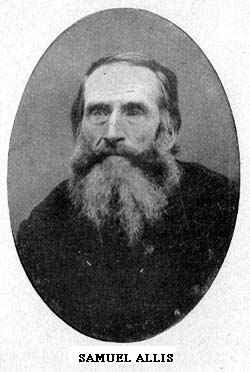3

|
INTRODUCTION
|
5
|
be found in the chapter on Pioneer Experiences, began work as a teacher among the Pawnee Indians in Nebraska. But she says she was invited to come by missionaries of the American Board. Who were they, and when did they come to Nebraska? Inquiry at the rooms of the A. B. C. F. M. in Boston brought the following interesting information:
The American Board sent as missionaries to the Pawnee Indians in the Nebraska country in 1834:
"Rev. John Dunbar, who was born in Palmer, Massachusetts, March 4, 1804; a graduate of Williams College in 1832, and Auburn Seminary in 1854; ordained Ithaca, New York, May 1, 1834, and set out from Ithaca, May 5, 1834, for Nebraska. He arrived at Ft. Leavenworth, Kansas, June 26, and at Bellevue, near Council Bluff, the following October.
"The Chief of the Grand Pawnees (one of their four bands) wished Mr. Dunbar to go with him on his trips. He went with this band on several of their long hunting expeditions, Mr. Dunbar returned to New England, September, 1836, married Miss Esther Smith, January 12, 1837, and returned with her in May of the same year. They resided in Bellevue, near the agency, until April, 1841, when he removed 130 miles to a Pawnee village.
"In June, 1843, this village was raided by the Sioux, and many Pawnees were killed, wounded, or carried away captive. Other similar attacks were afterward made, and the mission was given up in 1847.
"Rev. P. E. Ranney and wife joined this mission in 1844, but were transferred to the Cherokee mission in 1847.
"Benedict Satterlee, a physician, and wife set out for the mission March 2, 1836. She died on the way in Liberty, Missouri, April 30, 1836. He reached Bellevue, May 27, 1836, and was murdered while on a missionary tour by a renegade white man, May 10, 1837.
| 6 |
INTRODUCTION
|
|
"Samuel Allis, farmer and teacher, left Ithaca with Mr. Dunbar for the Pawnee village, May 5, 1834; married Emiline Palmer at Liberty, Missouri, she having come from

Ithaca, New York, with Dr. and Mrs. Satterlee. They were released from the service of the board in 1846.
"George B. Gaston and wife arrived at the mission May, 1840; and were released from service in 1842."
There were then engaged in Congregational work in Nebraska, years before Father Gaylord came to the territory, these missionaries besides Mrs. Platt, who was not
|
INTRODUCTION
|
7
|
commissioned by the board, but who did splendid service as a Congregational worker.
Eighteen hundred and eighty-four was, then, a jubilee year, but it was passed by unnoticed.
Historical accuracy, as well as denominational loyalty calls upon us to make honorable mention of these brave men and women who counted not their lives dear unto themselves, that they might take the Gospel of the dear Lord to the Indian tribes living in Nebraska. One will need to read between the lines to enter into the real spirit of our pioneer fathers. The allusions to the periods of drouth and grasshopper plague are simply a hint at the terrible sufferings and deprivations many endured. It is a pathetic chapter in the history of our state. It revealed many unnamed heroes and heroines; men and women who believed in Nebraska and stayed by the work in the dark hour of need. They have lived to see the state rich and prosperous, and have learned that drouths and plagues are not confined to the region once called "The American Desert," and that this "arid" region has sufficient moisture to insure large returns from the cultivation of its rich, strong soil.
Nebraska faces the future with courage and hope.
|
© 2002 for the NEGenWeb Project by Pam Rietsch, Ted & Carole Miller |
||||